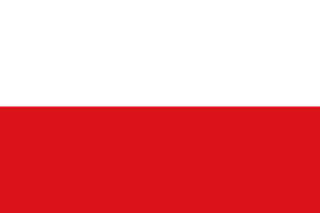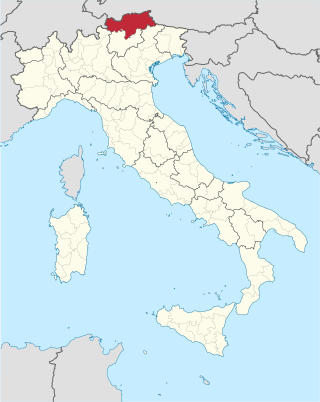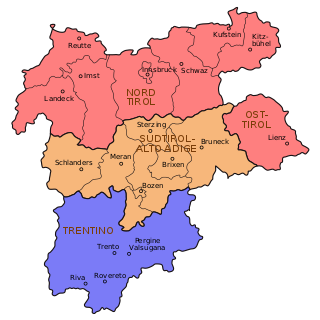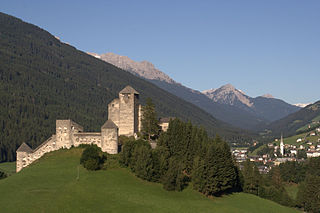
Tyrol is an Austrian federal state. It comprises the Austrian part of the historical Princely County of Tyrol. It is a constituent part of the present-day Euroregion Tyrol–South Tyrol–Trentino. The capital of Tyrol is Innsbruck.

South Tyrol is an autonomous province in northern Italy. An English translation of the official German and Italian names could be the Autonomous Province of Bolzano – South Tyrol, reflecting the multilingualism and different naming conventions in the area. Together with the autonomous province of Trento, South Tyrol forms the autonomous region of Trentino-Alto Adige/Südtirol. The province is the northernmost of Italy, the second largest with an area of 7,400 square kilometres (2,857 sq mi), and has a total population of about 534,000 inhabitants as of 2021. Its capital and largest city is Bolzano.

Bolzano is the capital city of the province of South Tyrol, in Northern Italy. With a population of 108,245, Bolzano is also by far the largest city in South Tyrol and the third largest in historical Tyrol. The greater metro area has about 250,000 inhabitants and is one of the urban centers within the Alps.

Trentino-Alto Adige/Südtirol is an autonomous region of Italy, located in the northern part of the country. The region has a population of 1.1 million, of whom 62% speak Italian as their mother tongue, 30% speak South Tyrolean German and several foreign languages are spoken by immigrant communities. Since the 1970s, most legislative and administrative powers have been transferred to the two self-governing provinces that make up the region: the province of Trento, commonly known as Trentino, and the province of Bolzano, commonly known as South Tyrol. In South Tyrol, German remains the sizeable majority language.

East Tyrol, occasionally East Tirol, is an exclave of the Austrian federal state of Tyrol, separated from North Tyrol by parts of Salzburg State and parts of Italian South Tyrol. It is coterminous with the administrative district (Bezirk) of Lienz.

North Tyrol, rarely North Tirol, is the main part of the Austrian federal state Tyrol, located in the western part of the country. The other part of the federal state is East Tyrol, which also belongs to Austria, but doesn't share a border with North Tyrol.

The following is a list of municipalities of the autonomous province of South Tyrol, Italy. South Tyrol is divided into 116 such subdivisions. Both German and Italian are official languages in this province. Some municipalities have a third official language, Ladin. The capital of the province is in bold.

The (Princely) County of Tyrol was an estate of the Holy Roman Empire established about 1140. After 1253, it was ruled by the House of Gorizia and from 1363 by the House of Habsburg. In 1804, the County of Tyrol, unified with the secularised prince-bishoprics of Trent and Brixen, became a crown land of the Austrian Empire. From 1867, it was a Cisleithanian crown land of Austria-Hungary.

Hafling is an Italian comune (municipality) and a village in South Tyrol in Italy about 20 kilometres (12 mi) northwest of Bolzano and high above the valley basin of Merano.

Laives is a town and a comune (municipality) in South Tyrol in northern Italy, located about 8 kilometres (5 mi) south of the city of Bolzano. It is one of only five mainly Italian speaking municipalities in South Tyrol, and the fourth largest municipality in the province.
The Austrian Landesliga is the fourth tier of football in Austria. It is divided into nine conferences — one for each Austrian state:

Grießen Pass is a high mountain pass in the Austrian Alps between the federal states of Salzburg and Tyrol.

Heinfels is a municipality in the district of Lienz in the Austrian state of Tyrol. It is most known as the site of Burg Heinfels.

Telfs is a market town in the district of Innsbruck-Land in the Austrian state of Tyrol, 27 kilometres west of Innsbruck. It is the third largest municipality in Tyrol. Telfs received its status in 1908 and maintains its own district court.
Summer in Tyrol is a 1964 Danish comedy film directed by Erik Balling and stars Dirch Passer, among others. The film is based on the Austrian operetta Im weißen Rößl.

Burg Bruck is a medieval castle in Lienz in Tyrol, Austria. Burg Bruck is 711 metres (2,333 ft) above sea level.

Burg Heinfels is a castle in Heinfels, Tyrol, Austria.

The archducal hat of Tyrol is an insignia of the County of Tyrol. It is located in the treasury of Mariastein.

Tyrol is a historical region in the Alps of Northern Italy and western Austria. The area was historically the core of the County of Tyrol, part of the Holy Roman Empire, Austrian Empire and Austria-Hungary, from its formation in the 12th century until 1919. In 1919, following World War I and the dissolution of Austria-Hungary, it was divided into two modern administrative parts through the Treaty of Saint-Germain-en-Laye:
















